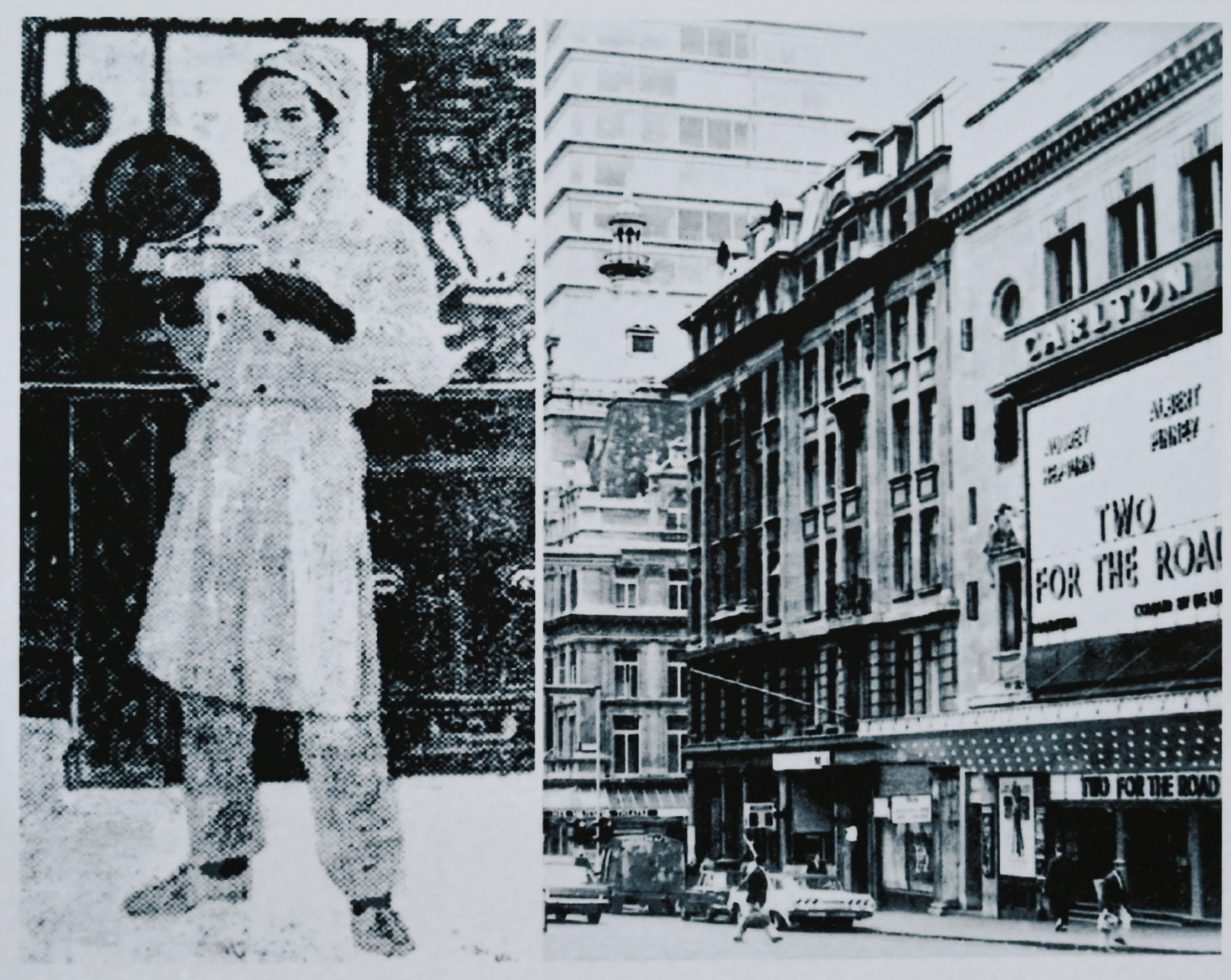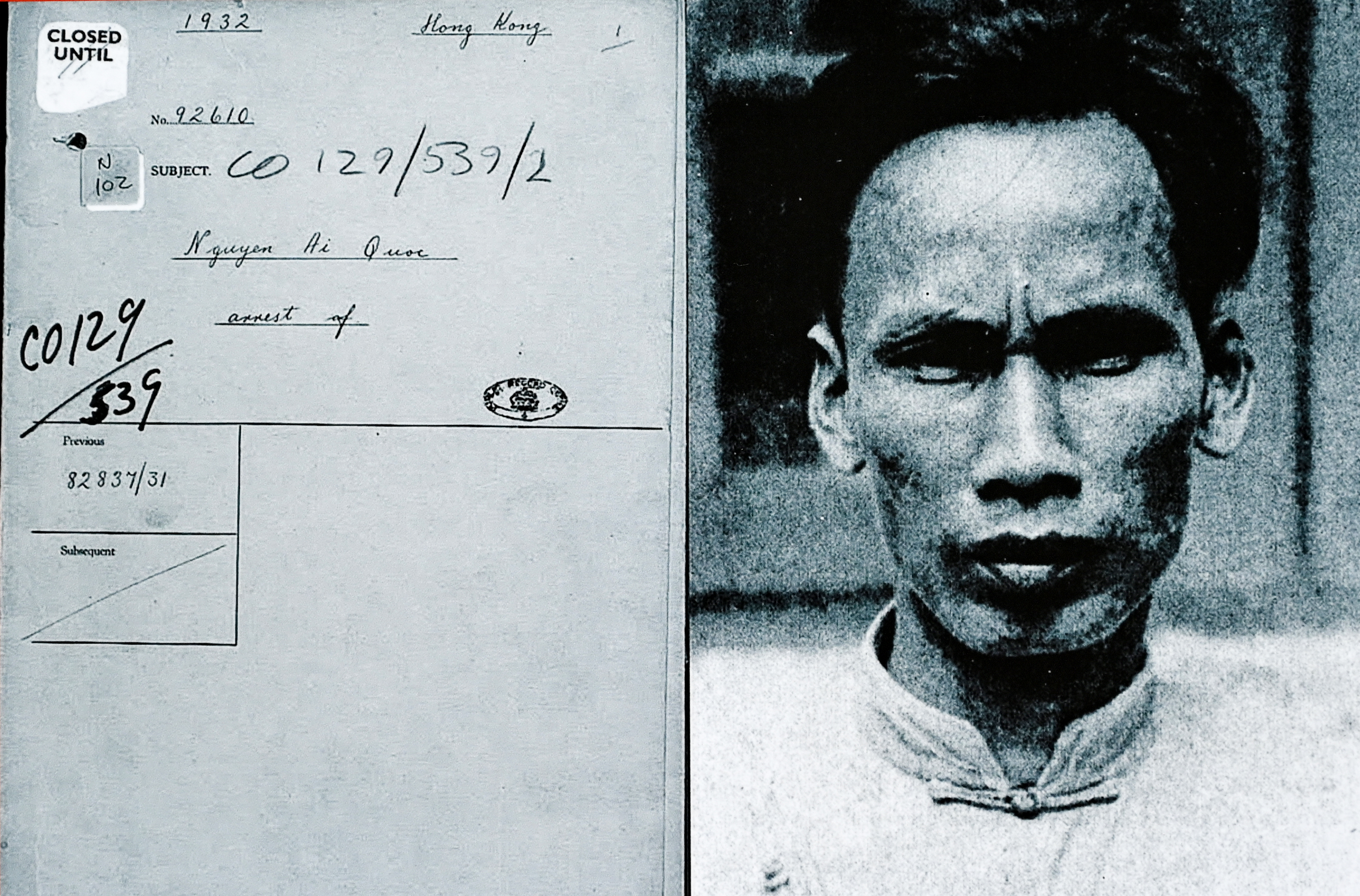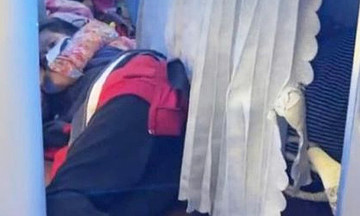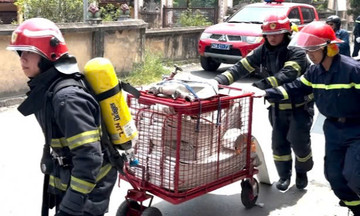 |
The painting "The Man Who Sought the Shape of the Country" depicts June 5, 1911, when Nguyen Tat Thanh left Nha Rong Wharf (TP HCM), with the desire "Freedom for my compatriots, independence for my Fatherland, these are all I want, these are all I understand". *Italicized* |
On 15/8, the Ho Chi Minh Mausoleum and Museum opened the exhibition "Vietnam - Ho Chi Minh - Milestones of National History", commemorating the 80th anniversary of the August Revolution and National Day (2/9). Over 200 photos, documents, and artifacts are arranged in five sections, narrating the journey from Nguyen Ai Quoc's youth seeking a path to national salvation to the General Uprising, the Dien Bien Phu victory, the liberation of the South and reunification of the country, and the period of renovation and international integration, spanning from 1911 to the present.
Specifically, the materials on "Nguyen Ai Quoc - The Man Who Sought the Path to National Salvation" depict his 30 years of travel from the day the young Nguyen Ai Quoc left his homeland to the day he returned to Cao Bang (1911-1941).
 |
Nha Rong Wharf in the early 20th century (now number 1 Nguyen Tat Thanh Street, TP HCM), where Nguyen Tat Thanh (also known as Van Ba) departed to find the path to national salvation on 5/6/1911. *Italicized* |
 |
The ship Admiral Latouche-Treville carried the young Nguyen Tat Thanh away from his homeland, beginning his journey to find the path to national salvation. *Italicized* |
 |
Vieux-Port, Marseille, in the early 20th century - where Nguyen Tat Thanh first set foot in France, July 1911. *Italicized* |
 |
During his travels, the patriotic young man held various jobs, including working as a kitchen helper at the Carlton Hotel in London, England for four years. Nguyen Tat Thanh both earned a living and studied, preparing his ideological foundation to find the path to independence and freedom for his nation. *Italicized* |
 |
A map of Nguyen Tat Thanh's journey from 1911 to 1920, spanning Asia, Europe, Africa, and America. *Italicized* |
 |
Nguyen Ai Quoc speaking at the 18th Congress of the French Socialist Party on 26/12/1920, supporting Lenin's First Draft of the Theses on the National and Colonial Questions, participating in the founding of the French Communist Party, and becoming the first Vietnamese communist. *Italicized* |
 |
Houses number 13 and 13/1 Van Minh Street, Guangzhou, China - headquarters of the Vietnamese Revolutionary Youth League founded by Nguyen Ai Quoc in 1925. The League opened a political training school, training core cadres for the Vietnamese revolutionary movement. *Italicized* |
In June 1919, an 8-point petition demanding freedom, democracy, and self-determination for the Annamese people, signed by Nguyen Ai Quoc, was sent to the Versailles Conference (France) - marking the beginning of the Vietnamese voice in international forums at that time. The second point of the 8-point petition stated: "Reform the legal system in Indochina by granting the natives the same legal guarantees as Europeans, completely and thoroughly abolishing the special courts used as tools of terror and oppression against the most honest segment of the Annamese people". However, none of the demands were accepted.
A photo from the early 1920s shows Nguyen Ai Quoc next to the newspaper L’Humannite, the official publication of the French Communist Party, where the 30-year-old fought for the rights of colonized peoples. During these years, he actively wrote for newspapers and participated in the international communist movement.
 |
British intelligence files and a photo of Nguyen Ai Quoc under the alias Tong Van So, arrested in Hong Kong in 1931 at the request of French secret police. Despite being defended by lawyer Loseby and acquitted by the Supreme Court, he was imprisoned until the end of 1932 in Victoria Prison (Hong Kong). *Italicized* |
 |
 |
 |
On 28/1/1941 (the second day of the Lunar New Year), at milestone 108 on the Vietnam-China border in Pac Bo village, Truong Ha commune, Cao Bang province, Nguyen Ai Quoc returned to his homeland after 30 years of travel, directly leading the revolutionary movement with the Party's Central Committee towards the General Uprising. Nine days after returning, he wrote the letter "Appeal to Compatriots", calling on the people to rise up and gain independence for the nation. The letter stated: "More than 20 million descendants of Lac and Hong (Vietnamese people) are determined not to remain slaves forever".
The exhibition is part of a series of activities including the opening of the thematic exhibition "Journey for Peace"; "Continuing the Story of Peace"; the launch of the book "President Ho Chi Minh with General Nguyen Chi Thanh", and the book "The Former Governor-General's Palace of Indochina and the Presidential Palace Today".
"Visiting Uncle Ho's former residence, I feel like he is still here, close and familiar as if returning home," Le Thi Phuong, Director of the Ho Chi Minh Mausoleum and Museum at the Presidential Palace, shared at the opening ceremony. This is where President Ho Chi Minh lived and worked the longest, for 15 years from 19/12/1954 to 2/9/1969. After President Ho's passing, the Politburo and the Central Committee of the Party decided to preserve the memorial area, relics, and artifacts at the Presidential Palace.
Giang Huy - Hoang Phuong












